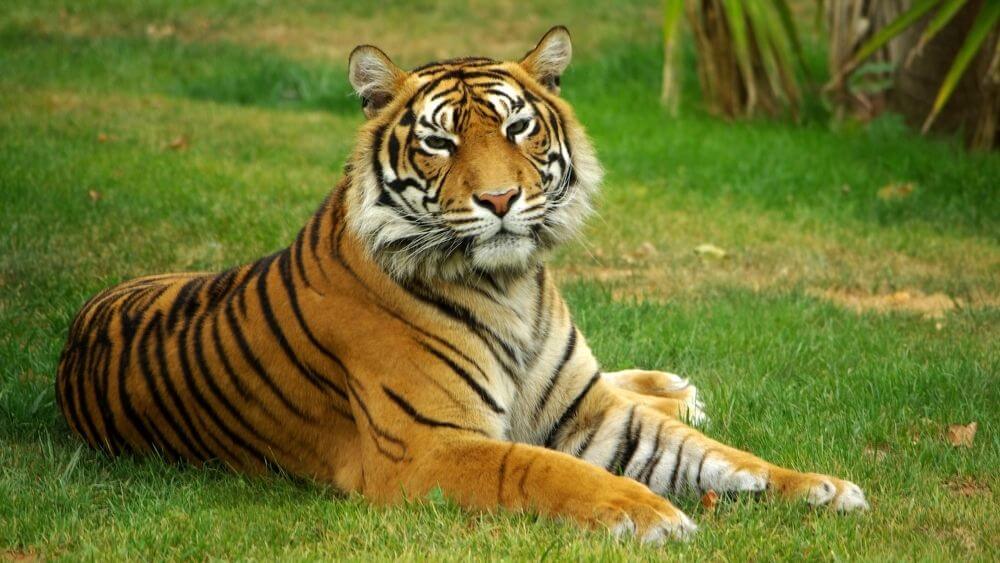Why do tigers have stripes?

Contents
Tiger:
- Tigers belong to the species of cats. They are actually called big cats.
- They are the largest of the living cat species.
- Tiger is the member of Genus Panthera group. Tigers are commonly referred to as apex predators.
- Apex predator refers to an animal that is at the top of the food chain and itself does not have any natural predators. That means tigers can prey on other animals, but there are no animals that prey on tigers.
- The tiger is a carnivore in nature. This means that tigers feed on other animals for their survival.
- The common animals that fall prey to tigers are deer and wild boar.
- In today’s world, tigers have become an endangered species.
- There are many practices around the world that are being introduced along with the enforcement of a few rules to save the species of the tiger from extinction.
- Tigers are most typically orange or reddish orange in color with very bold black stripes on their body, along with white dots present on some particular areas such as the chest, neck, belly and the inside of the legs.
Importance of these bold stripes
But what can be the importance of these bold stripes present on the body of tigers?
- Well, a tiger does not have the high speed of a cheetah, nor does it possess the immense strength of a lion.
- The tiger is the bigger version of a cat, and it has to survive by preying on other animals.
- Tigers are at the peak of the food chain. Hence there is no need to worry about any predators.
- However, for tigers to catch their prey, they need to be hidden from view in order to carefully orchestrate a surprise attack on their prey.
- The stripes on its body allow it to blend into the surroundings, effectively hiding the tiger from its prey.
- Most animal are colorblind. They have limited vision of display.
- For deer and other similar animals, their vision is comparable to that of a colourblind human. This means that they cannot differentiate/identify the colour orange.
- When a tiger hides in tall grass, the long stripes of the tigers body blends so well into the surroundings that its prey cannot see it even if they’re looking straight at it. Deers and such animals are also unable to sense the presence of tigers due to their agility and stealth, thereby making them vulnerable to attack. Once, the tiger is in the correct position it pounces on its prey, essentially overpowering it and taking home the food it was in the search of.
Fun Facts:
- The scientific name of the tiger is Panthera tigris.
- Each tiger has a different pattern of stripes. It is as unique as the fingerprint of the human finger.
- The baby of a tiger is called a cub. They stay with their mother for about two years before becoming independent.
Related Questions:
- What is camouflage?
- Which other animals have stripes on them?
- What is the purpose of the stripes present on a tigers body?
True or False:
- Tigers belong to the species of dogs.
- Tiger is a member of the Genus Panthera.
- Tigers are the lowest on the food chain.
- Tigers can prey on other animals, however, no animal can prey on a tiger.
- A tiger does not have great speed like a cheetah.
Objective Quiz:
- Tigers belong to the species of _______.
- Cats.
- Dogs.
- Mice.
- None of the above.
- Tigers are _________ in nature.
- Herbivorous.
- Carnivorous.
- Both 1) and 2).
- None of the above.
- The tiger is said to be an _______.
- Apex predator.
- Alpex predator.
- Topper predator.
- None of the above.
- Tiger is the ________ living species of cats.
- Largest.
- Smallest
- Shortest.
- All of the above.
- Tigers have ________ on their body.
- Stripes.
- Waves.
- Quills.
- None of the above.






Responses